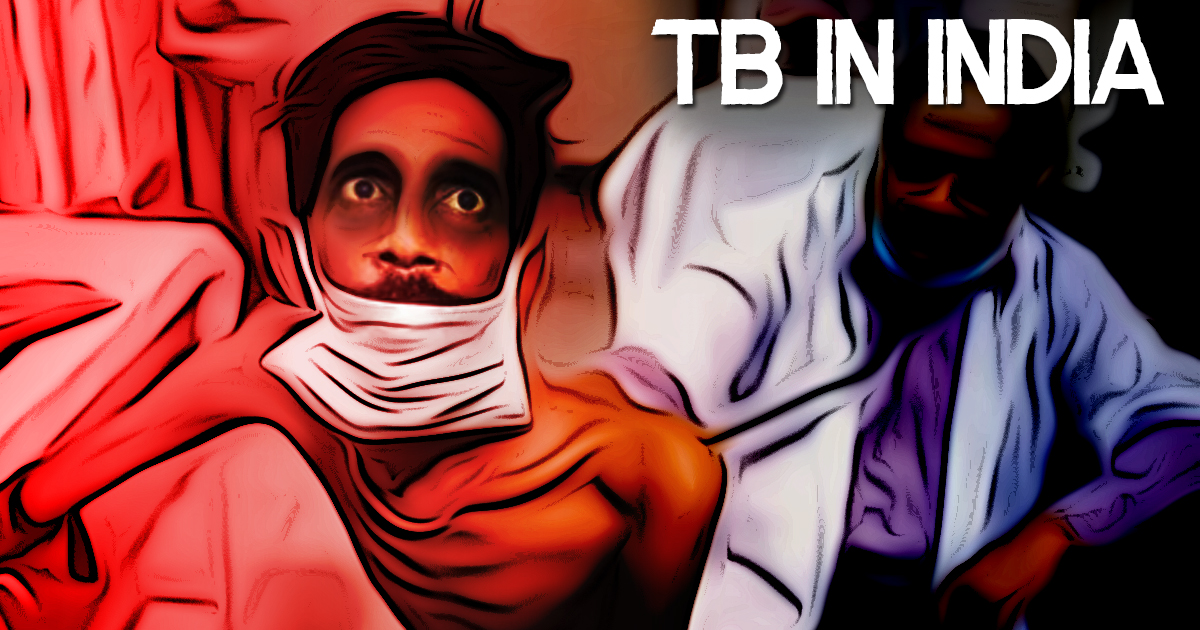
Recently, the Ministry of Health and Family Welfare published the India TB Report 2024, which reveals a decrease in the mortality rate from Tuberculosis (TB), dropping from 28 per lakh population in 2015 to 23 per lakh in 2022.
Key Highlights of the Report
Trends in TB Cases and Deaths:
- The majority of TB cases continue to be reported by government health centers, although notifications from the private sector have increased.
- In 2023, about 33%, or 8.4 lakh, of the 25.5 lakh cases were reported by the private sector. This is a significant rise compared to 2015, when only 1.9 lakh cases were notified by the private sector. The year 2015 serves as the baseline for the national program aimed at eliminating TB.
- The estimated number of TB cases slightly increased to 27.8 lakh in 2023, up from 27.4 lakh the previous year.
- Mortality due to TB remained constant at 3.2 lakh in 2023.
- India’s TB-related deaths decreased from 4.94 lakh in 2021 to 3.31 lakh in 2022.
- The country achieved its 2023 target of initiating treatment in 95% of diagnosed patients.
Challenges in Achieving Targets:
- Despite setting ambitious goals to eradicate TB by 2025, India has encountered challenges in meeting these targets.
- The number of reported cases and deaths in 2023 did not meet the expectations set by the country.
- Several risk factors affect the incidence and outcomes of TB treatment, including undernourishment, HIV, diabetes, alcohol use, and smoking.
Undernourishment:
- In 2022, about 7.44 lakh TB patients were undernourished. The government provides monthly support of Rs 500 to nearly one crore beneficiaries to improve nutrition. Additionally, the Ni-kshay Mitra program encourages donations of food baskets.
HIV:
- People living with HIV have a 20-fold increased risk of developing TB compared to the general population. In 2022, 94,000 TB patients were also living with HIV.
Diabetes:
- Globally, 3.70 lakh TB patients had diabetes in 2022, with 1.02 lakh in India. Diabetes increases the risk of contracting TB by two to three times and is associated with a higher likelihood of developing Multi-Drug Resistant TB. TB treatment is also less effective in diabetic patients. In 2023, 92% of TB patients were screened for diabetes, and 7.7% were diagnosed. Of those diagnosed, 63% began diabetes treatment.
Alcohol and Tobacco Use:
- Consuming more than 50 ml of alcohol daily raises the risk of TB infection, active TB, and recurrence. In 2023, about 74% of TB patients (18.8 lakh) were screened for alcohol use, with 7.1% identified as alcohol users.
- Similarly, 75% of TB patients (19.1 lakh) were screened for tobacco use in 2023, with 11% identified as tobacco users, and 32% were connected to tobacco cessation services.
What is Tuberculosis?
Overview:
- Tuberculosis is a bacterial infection caused by Mycobacterium tuberculosis. It can affect various organs, most commonly the lungs, pleura (lining around the lungs), lymph nodes, intestines, spine, and brain.
Transmission:
- TB is an airborne infection that spreads through close contact with infected individuals, particularly in densely populated areas with poor ventilation.
Symptoms:
- Typical symptoms of active lung TB include a persistent cough with sputum and sometimes blood, chest pain, weakness, weight loss, fever, and night sweats.
Prevalence of Infection:
- Each year, around 10 million people are affected by TB. Despite being a preventable and curable disease, TB remains the leading cause of death from infectious diseases worldwide, claiming 1.5 million lives annually.
- TB is the primary cause of death among people living with HIV and a significant contributor to antimicrobial resistance.
- Most TB cases occur in low- and middle-income countries, with about half of all TB patients residing in eight countries: Bangladesh, China, India, Indonesia, Nigeria, Pakistan, the Philippines, and South Africa.
Treatment:
- TB is typically treated with a standard six-month regimen of four antimicrobial drugs, provided alongside patient education, supervision, and support from healthcare workers or trained volunteers.
- Although anti-TB medications have been in use for decades, resistance to one or more of these drugs has been observed in every country surveyed.
- Multidrug-resistant TB (MDR-TB) is caused by bacteria resistant to isoniazid and rifampicin, the two most potent first-line anti-TB drugs. MDR-TB can be treated and cured using second-line drugs, such as bedaquiline.
- Extensively drug-resistant TB (XDR-TB) is a more severe form of MDR-TB caused by bacteria resistant to the most effective second-line anti-TB drugs, often leaving patients without viable treatment options.
Drugs for TB:
- Isoniazid (INH): A key drug in TB treatment, effective against Mycobacterium tuberculosis by inhibiting mycolic acid synthesis in the bacterial cell wall.
- Rifampicin (RIF): Another essential TB drug, rifampicin works by inhibiting RNA synthesis in bacteria and is vital for preventing drug resistance when used in combination with other drugs.
- Delamanid: A newer drug for MDR-TB, often used in combination with other medications.
Different Initiatives to Combat TB
Global Efforts:
- The World Health Organization (WHO) has initiated the “Find. Treat. All. #EndTB” campaign in collaboration with the Global Fund and Stop TB Partnership.
- WHO also publishes the Global Tuberculosis Report.
- The Global Plan to End TB (2023-2030) outlines the necessary actions and financial resources required to end TB as a public health issue by 2030. This goal is endorsed by all United Nations (UN) Member States and the WHO.
- The End TB Strategy significantly expands efforts in line with the United Nations Sustainable Development Goal 3.3.
India’s Efforts:
- Initiatives like Pradhan Mantri TB Mukt Bharat Abhiyan, National Strategic Plan (NSP) for Tuberculosis Elimination (2017-2025), TB Harega Desh Jeetega Campaign, Nikshay Poshan Yojna, and RePORT India are part of India’s comprehensive approach to combating TB.




